
Dominy Furniture
from the Manor House on Gardiner’s Island
The Gardiner family were East Hampton Town’s largest land holders. Besides owning a 5,184 square mile island, they owned land in Montauk and all over the town. Between a house in town and a manor house on Gardiner’s Island, the family often used the Dominys to build furniture and other projects including two wind powered grist mills.
The Dominy family of craftsmen were able to supply their community with an ambitious selection of items from buttons, garden fences, spinning wheels, bedsteads, tall-case clocks to sawmills and barns. They were able to repair almost any damaged thing brought to them, including a gun lock, stilliard scale to adding new feet to a chest of drawers. Their accounts books follow their labors from the 1760s until the end of the first quarter of the 19th century. Their furniture is prized by both the families who have held on to their ancestor’s heirlooms to collectors and museums which find the forthright style of the Dominy’s output to be exceptional examples of American design.
Several months ago, the East Hampton Historical Society was contacted by a representative for a Gardiner descendant living in New England. He had found that it was time to find an appropriate place for his three exceptional pieces of Dominy furniture, made for the manor house on Gardiner’s Island. These three items had never been out of the hands of a member of the Gardiner family. Two pieces from the collection, are both signed and dated. The East Hampton Historical Society is thrilled to be about to bring these two desks and tall-case clock back home to East Hampton.
They will go on exhibition next year, which is a centennial year for the Society,
in their historic 1784 Georgian style Clinton Academy.
— Courtesy of Richard Barons, Curator, East Hampton Historical Society
~~~~~~~~~~~~~~~~~~~~~~~~~
Eight-Day, Strike, Repeater, and Alarm Tall-Case Clock, 1791
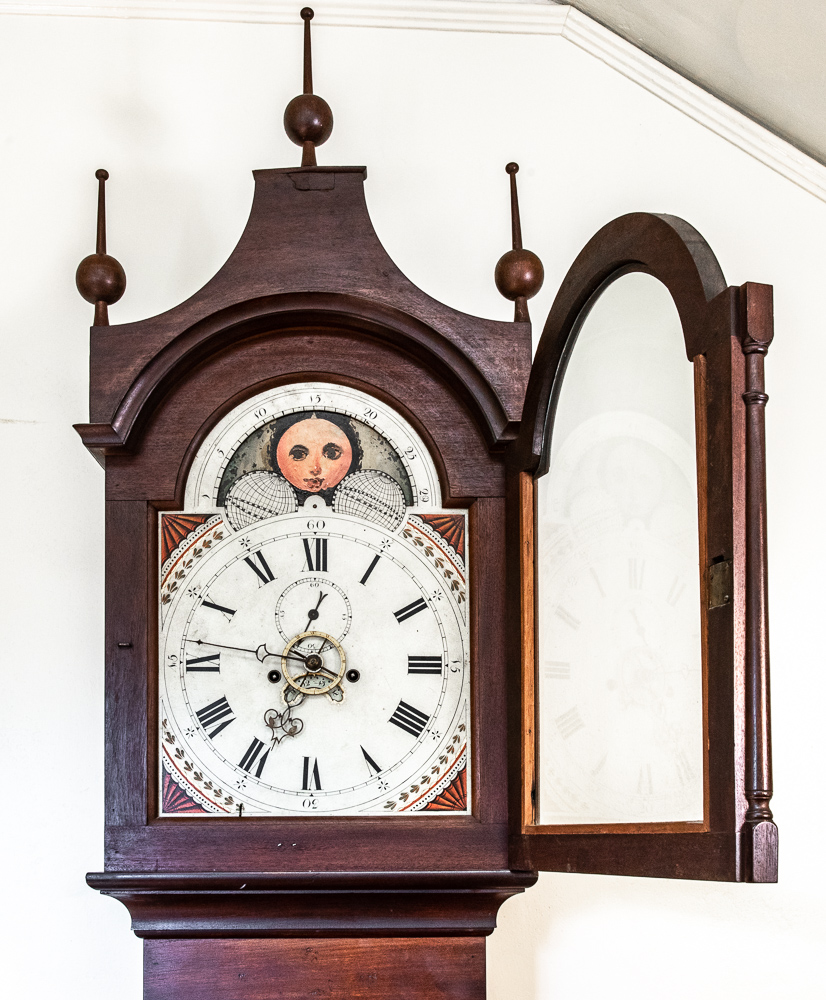
This clock was made for John Lyon Gardiner (1770-1816). Gardiner was the seventh proprietor of Gardiner’s Island. The clock was made by Nathaniel Dominy IV using an imported English dial from Birmingham. The case also was made of imported mahogany, which Mr. Gardiner ordered himself for his clock. Both Nathaniel IV and his son Nathaniel V worked on this important commission. Nathaniel Dominy V made the case. The clock is signed and dated “N. Dominie fecit 1791, Novr for John Lyon Gardiner $70.”
— Text throughout courtesy of Richard Barons, Curator, East Hampton Historical Society.
———————
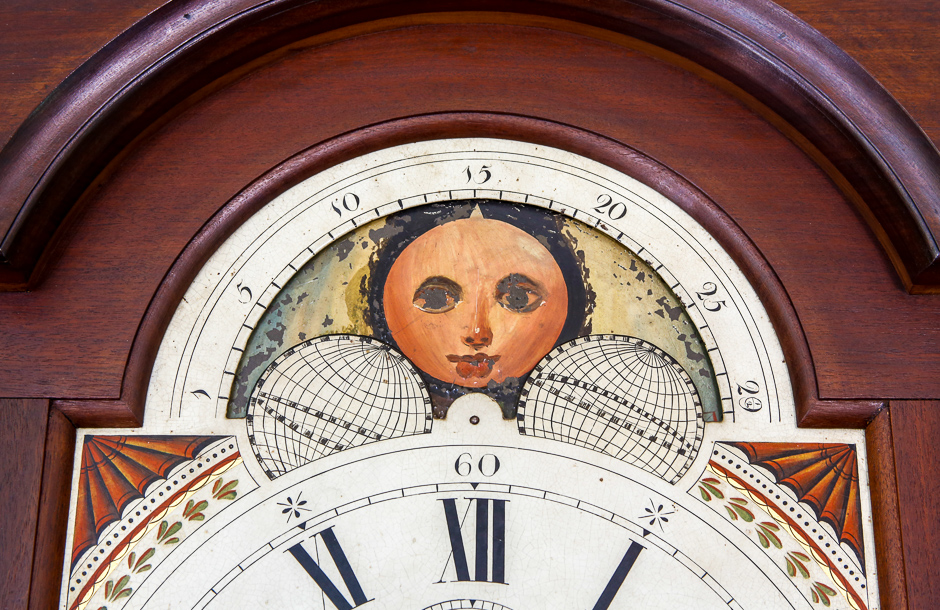
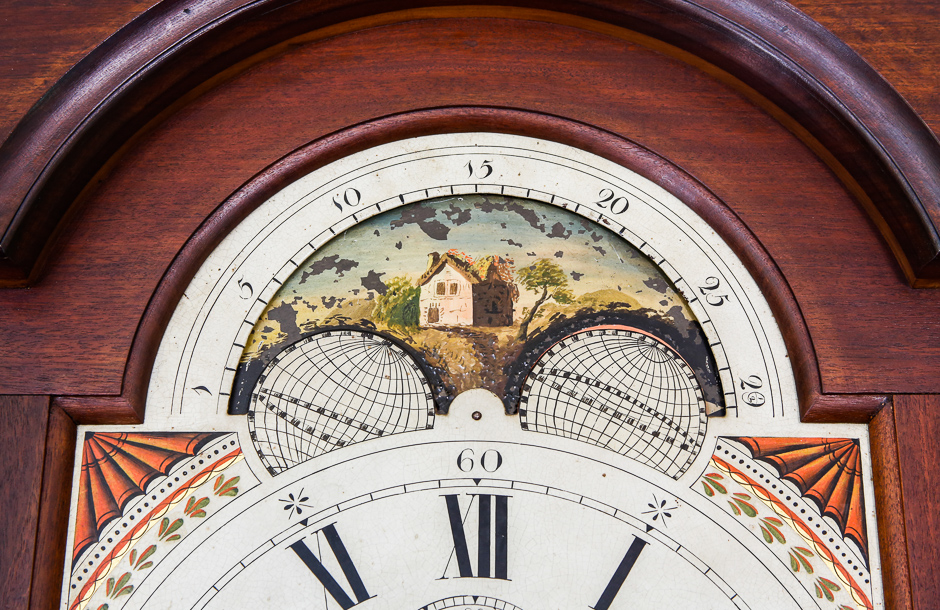
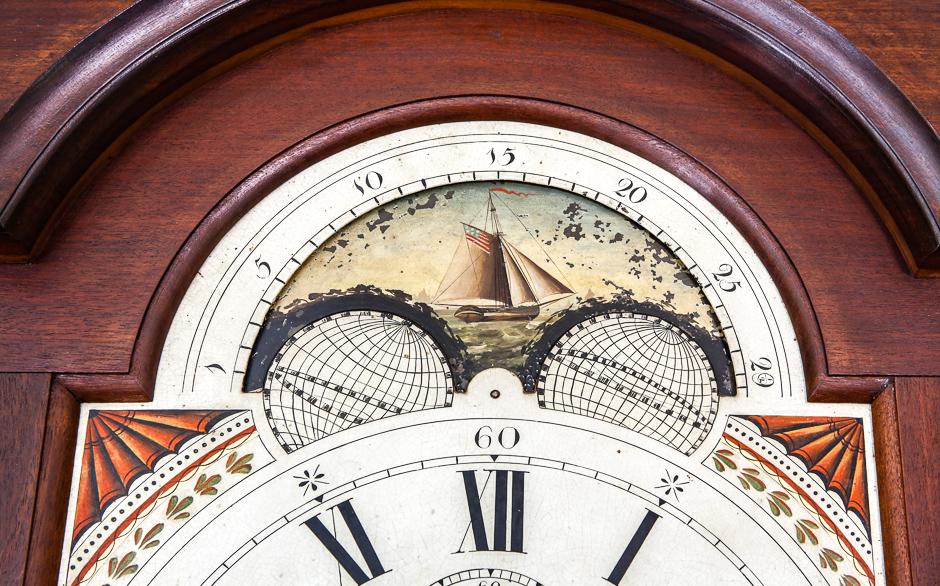

—————–

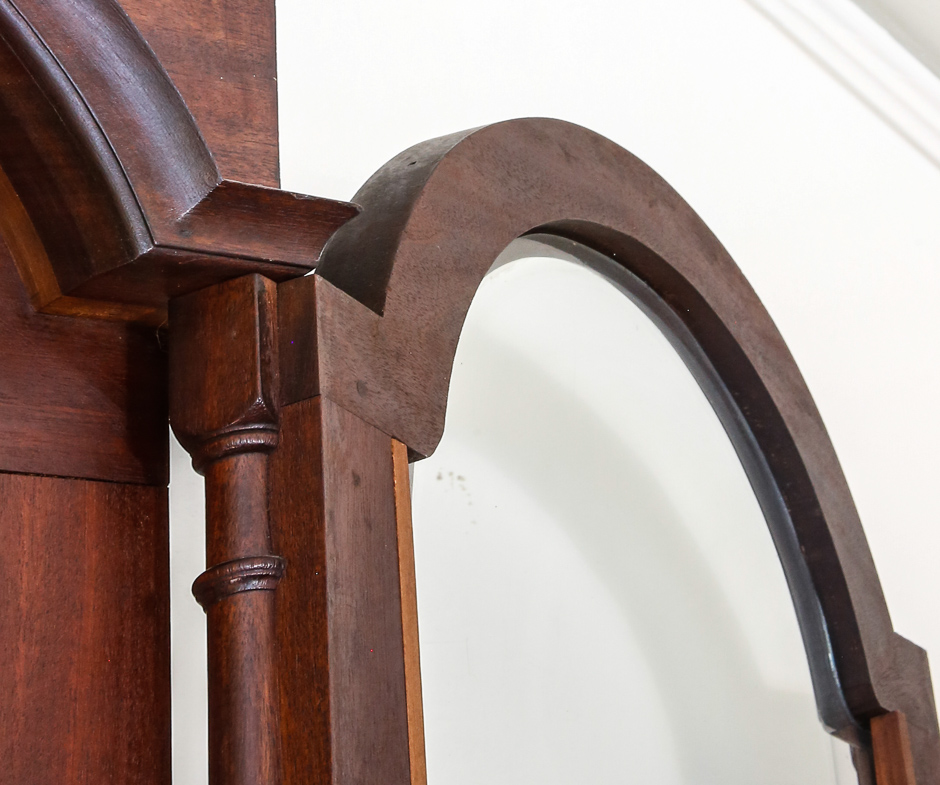
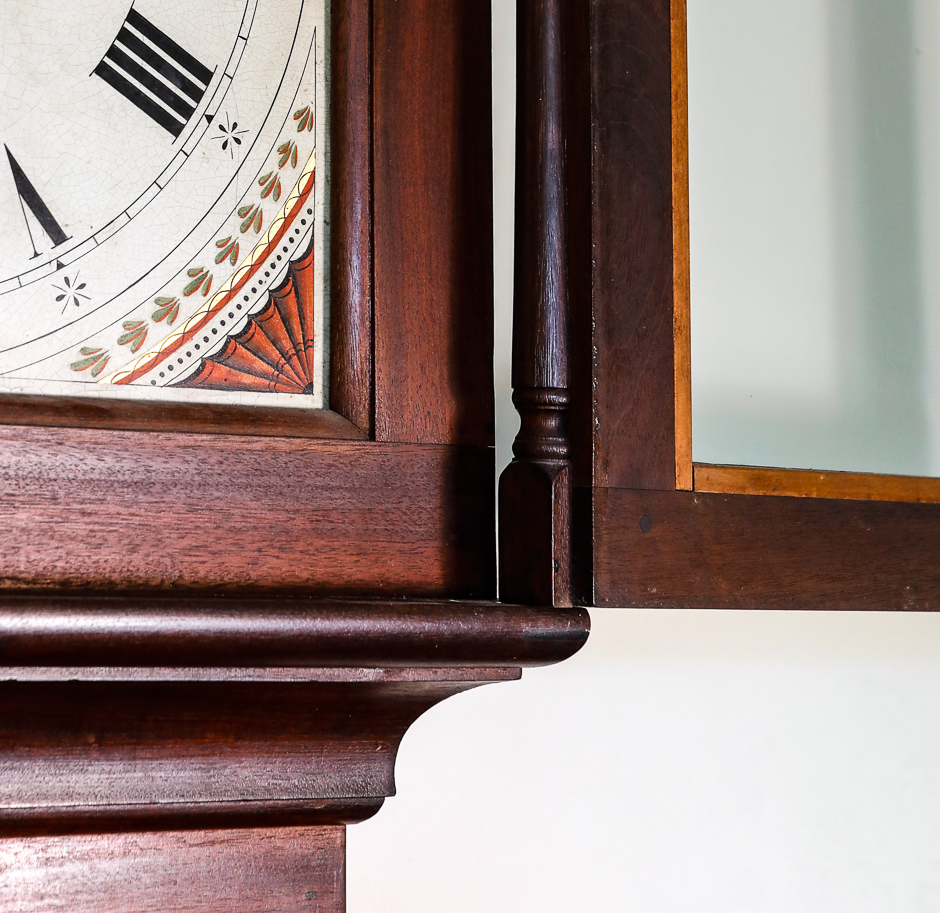
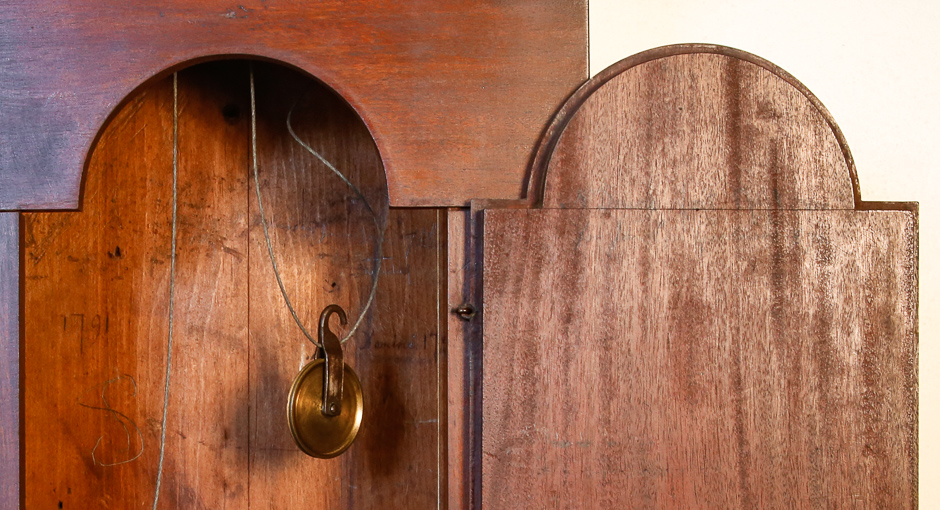

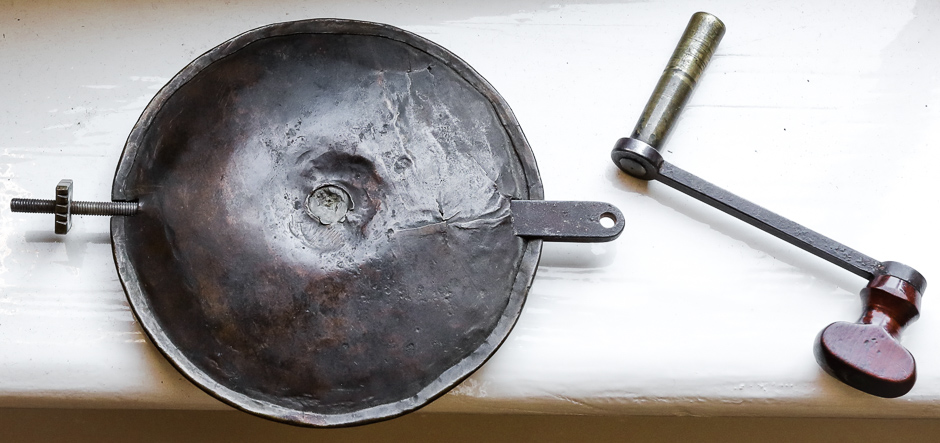
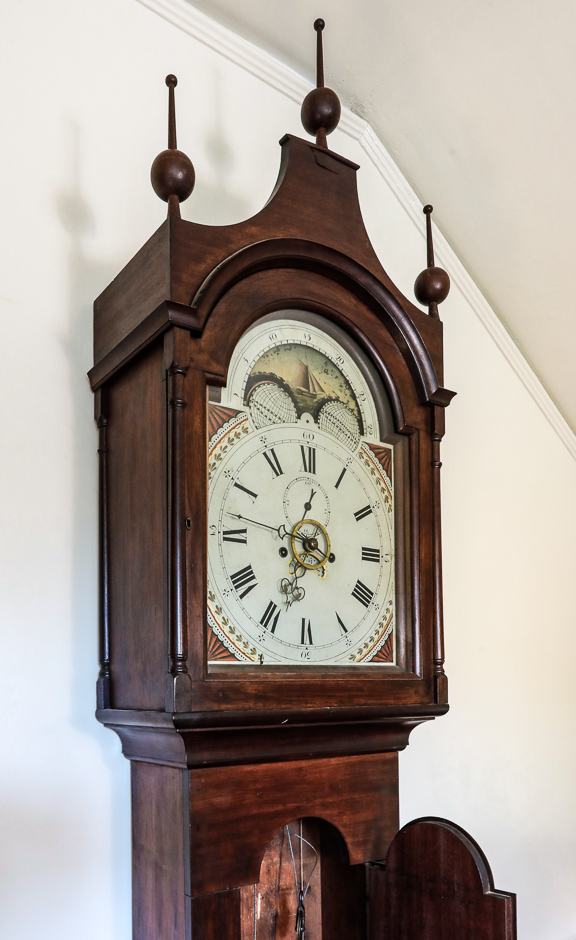
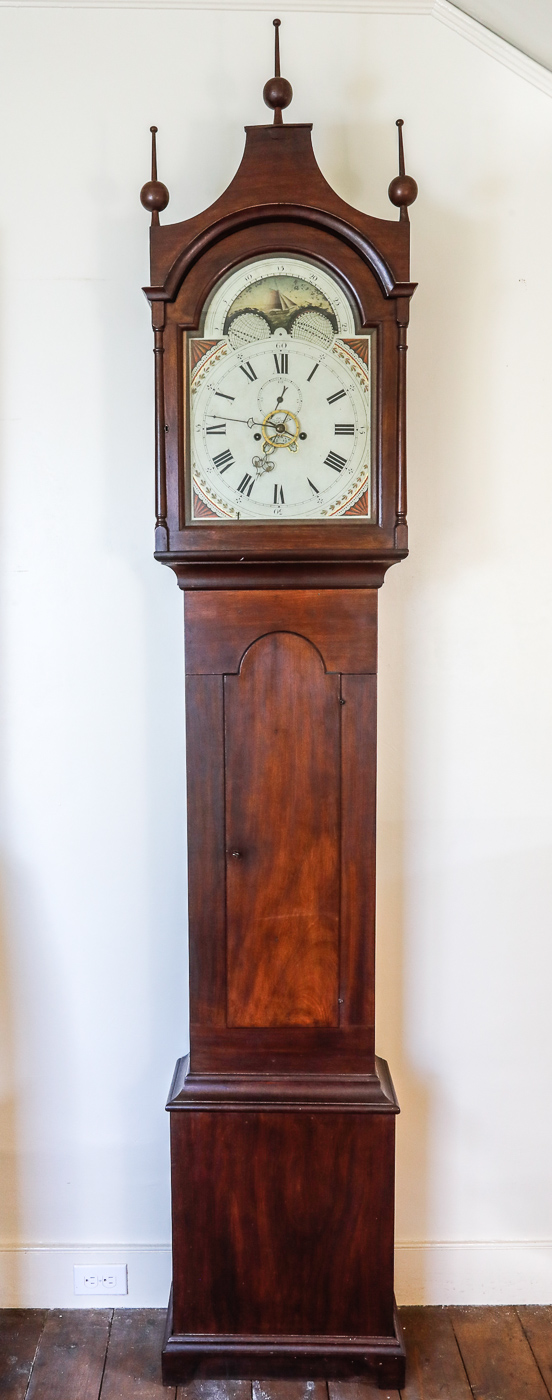
~~~~~~~~~~~~~~~~~~~~~~~~~~~
Desk, 1802
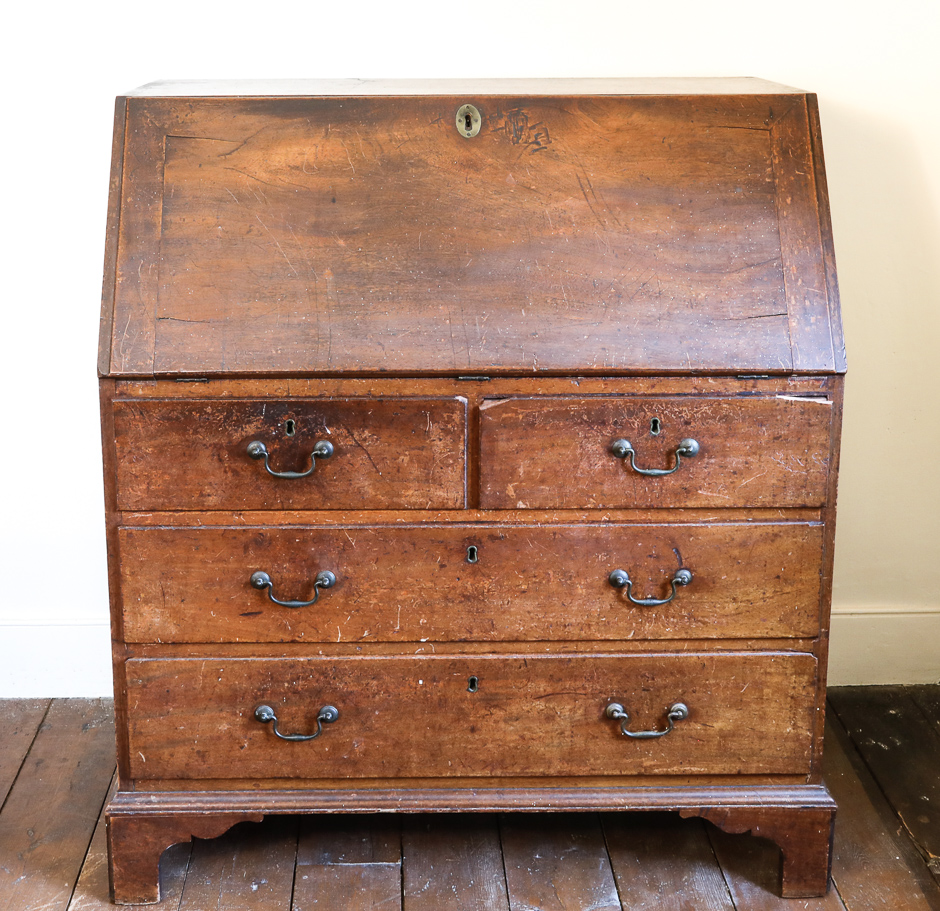
This desk is also made of Mahogany and retains the original cast brass handles. Straight-forward in design, this Chippendale influenced style slant-front desk exhibits the Dominy’s unique outline of the desk’s bracket feet. On the underside of the top right drawer is inscribed “Nathaniel Domine Junr fecit Janr 1802- For John Lyon Gardiner Esq – Price-Price 27 $ – 50 cts.” Built by Nathaniel Dominy V, one of the inventive elements of the desk are the chained iron folding rods, which support the hinged writing surface. This technique is unique to Nathaniel Dominy V.
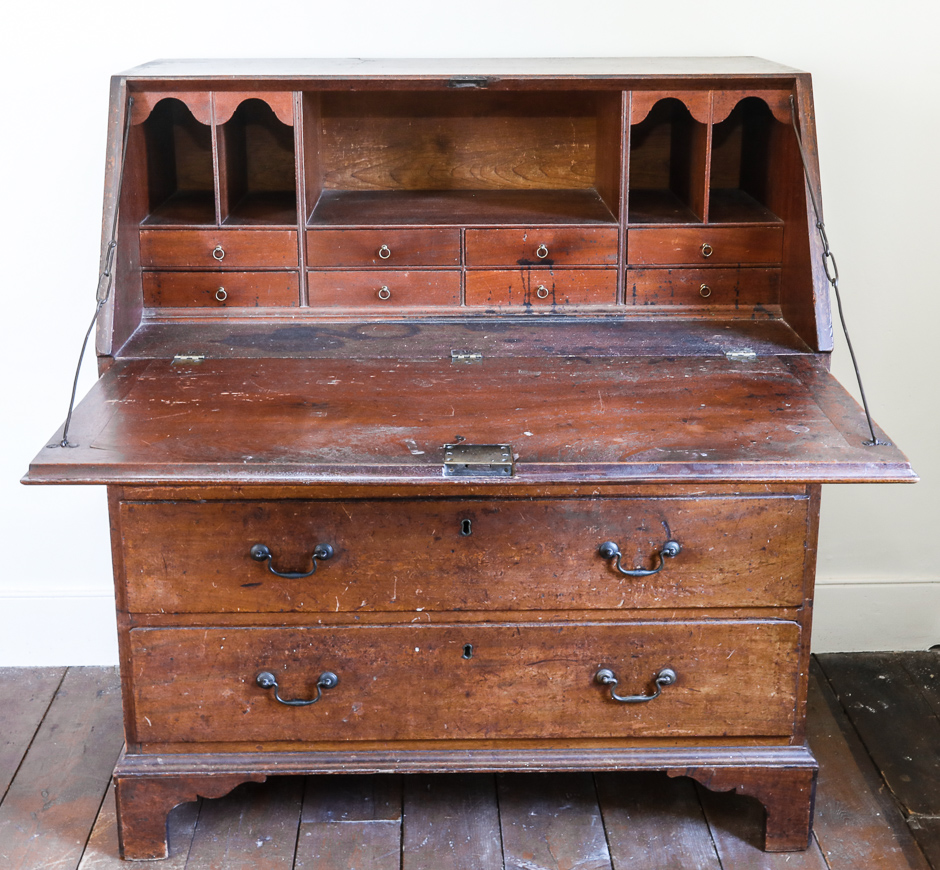


~~~~~~~~~~~~~~~~~~~~~~~~~~~
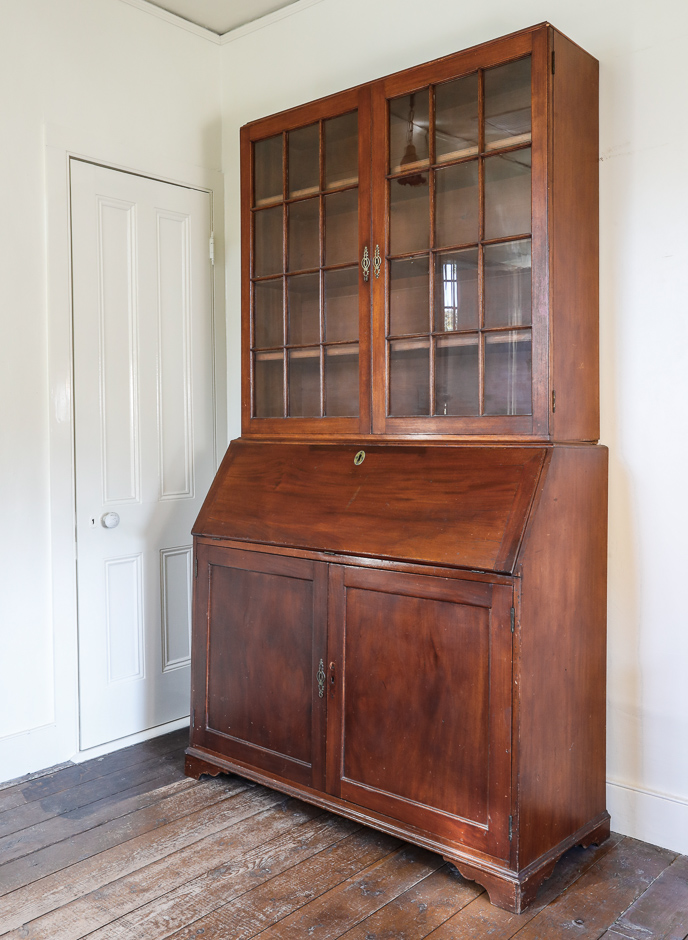
Desk and Bookcase
This wide secretary is attributed to Nathaniel Dominy V. It is believed to have been constructed between 1800 and 1815. The desk is imported Mahogany. It was likely ordered by John Lyon Gardiner. At some time, this desk lost about two inches of the height of the straight bracket feet, likely was too tall for a room at the manor house. This fall-front desk has the same hand-wrought rod and chain supports, as the desk made in 1802. Also in the interior is a small central cabinet with a hinged door. There is a band of inlay framing this small door. This is the only example of inlaid work decoration, yet found, on a piece of Dominy made furniture.

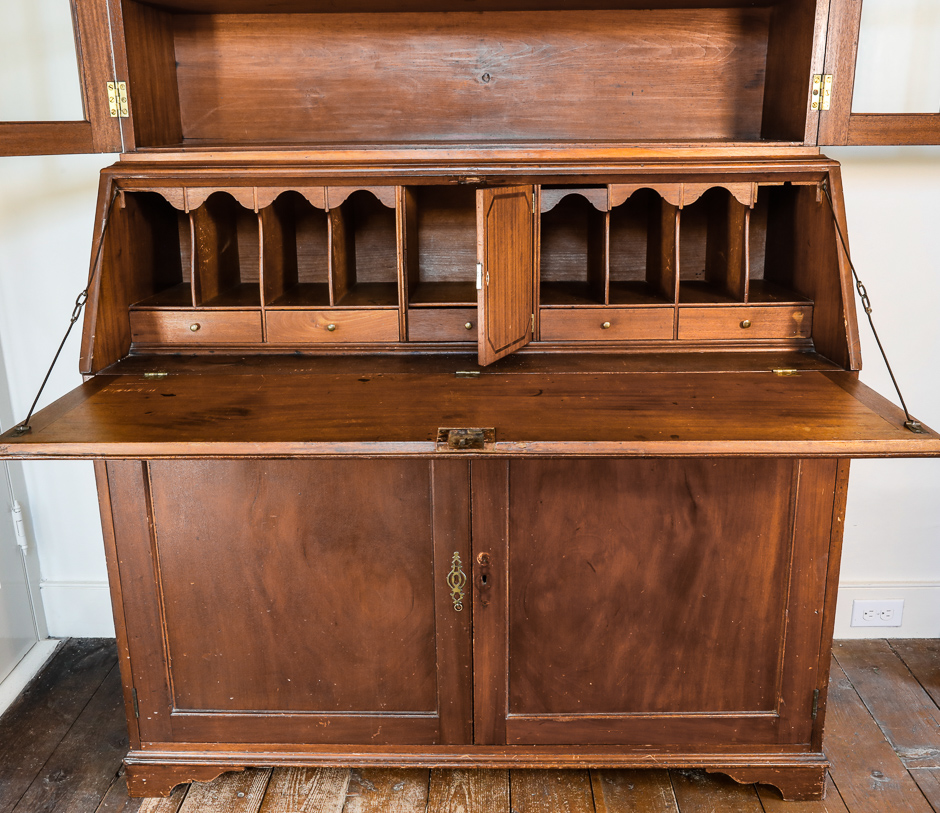

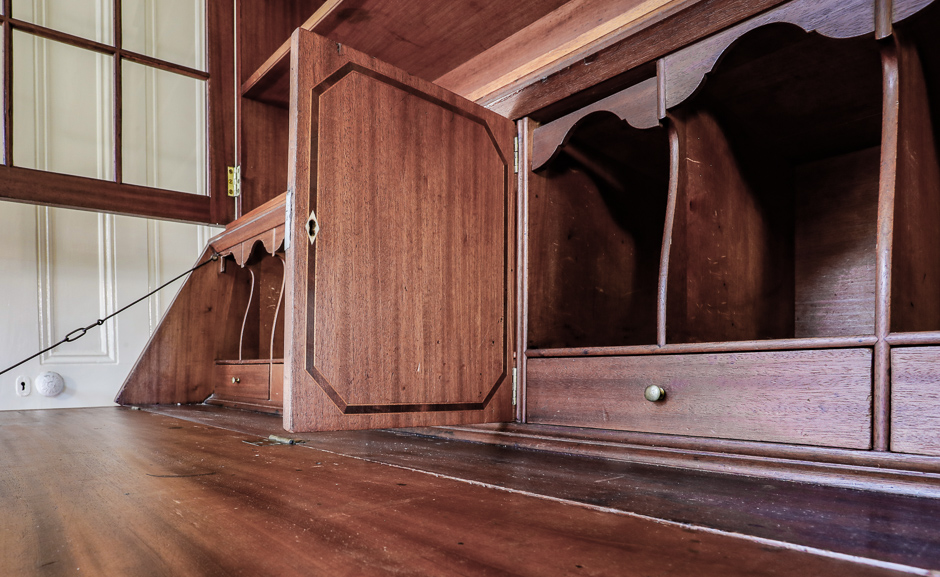

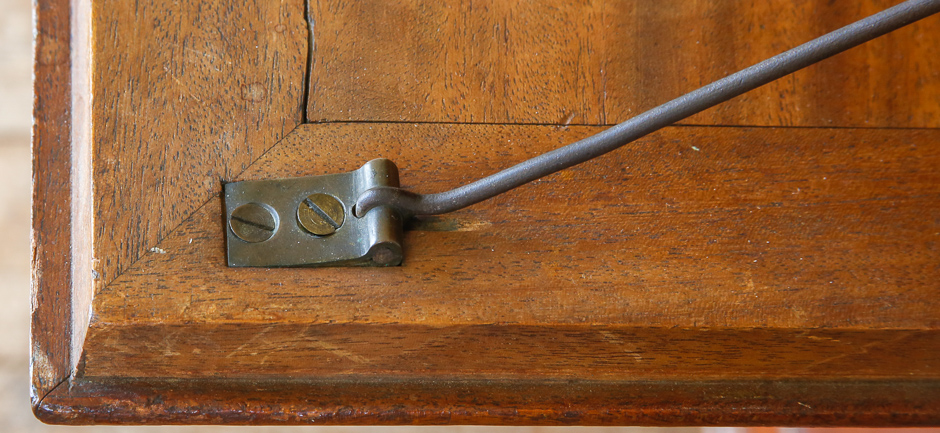
~~~~~~~~~~~~~~~~~~~~~~~~~~~
Photographed at the Moran Studio on October 15, 2021. Arranged by Richard Barons.
——————
Photographs © Jeff Heatley.
______________________________________________
